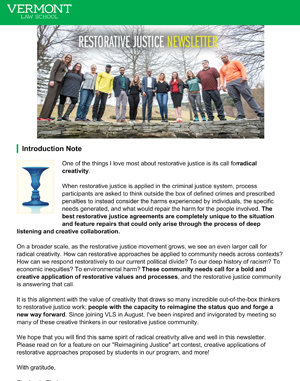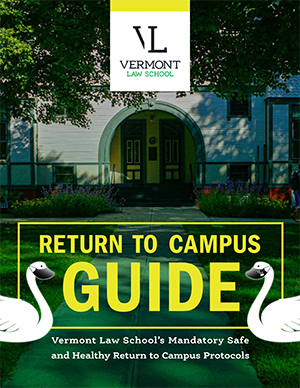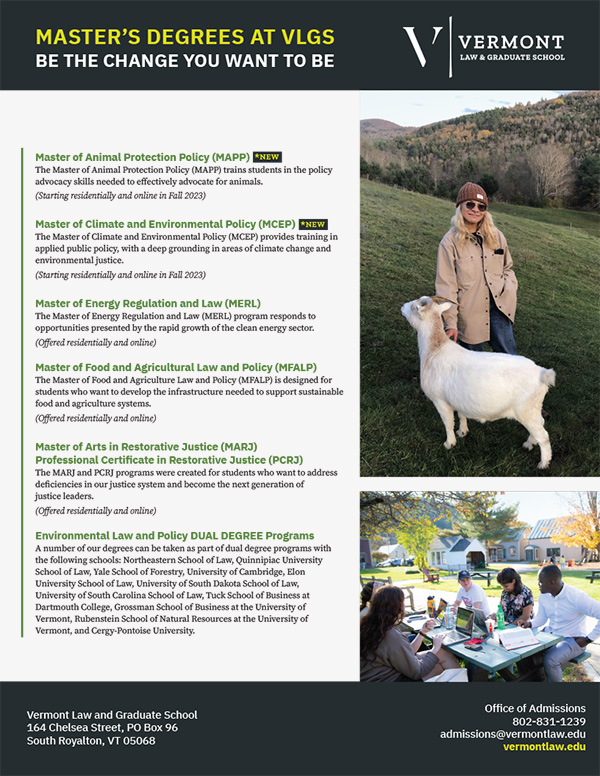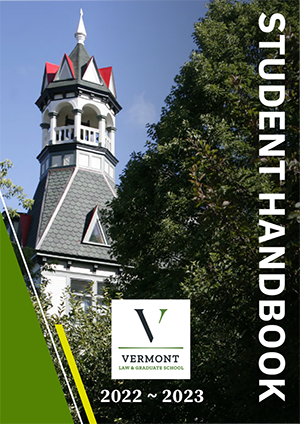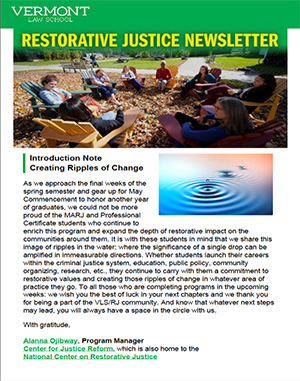The rugged wilderness of Northern California and Southern Oregon is on the other side of the country and a world away from the South Royalton campus of Vermont Law and Graduate School. That hasn't stopped student attorneys from working with the Environmental Advocacy Clinic's client Wild Horse Fire Brigade to help address the pressing environmental challenges facing this ecosystem, which is threatened by the risks of wildfire, climate disruption, and mismanagement of the area's public lands.
A national leader in developing solutions for these issues, Wild Horse Fire Brigade, located in Yreka, California, seeks to maintain wild horse populations and research potential effective nature-based solutions for wildfire mitigation. California is deeply threatened by climate change and wildfires, and wild horses can act as a climate change mitigation tool, alleviating the frequency and severity of wildfires in California by grazing built-up natural debris and brush as well as invasive cheatgrass.
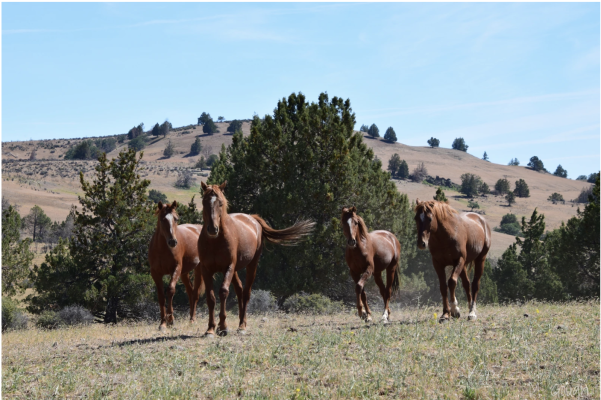
To focus attention on the region's challenges, the team of Lydia Samson '24, Alexis McCullough '24, and Taylor Scott Berkley '24 recently submitted a series of letters calling on county, state, and federal government agencies to adhere to their duties to protect wildlife and the ecosystem.
- On February 12, 2024, the team filed an urgent letter imploring state and federal wildlife agencies to protect wild animals and to mitigate the risks of ecological disaster in the aftermath of the ongoing removal of dams along the Klamath River.
The Klamath River dam removal was the largest dam removal project in the world, shutting down a series of four dams in California. Unfortunately, its removal transformed a previously abundant source of water for local wildlife into a muddy, treacherous, and polluted lakebed. Deer, fish, crayfish, and an eagle have perished in the mud despite the local and federal wildlife agencies’ mandates to protect wildlife and despite a promise from the company in charge of the restoration effort to mitigate environmental impacts from the dams' removal. Downriver from the former dams, countless lifeforms were killed due to the discharge of 5-7 million cubic yards of polluted clay sediments, including native species fish and aquatic life. There is also concern about further damage to the Klamath River ecosystem from ongoing erosion and downriver-scouring during floods, which may be displacing sediment polluted with mercury and other heavy metals in the now empty lake-bottom canyons.
The clinic's letter admonishes the government officials to adhere to their legal obligations to protect wildlife and to take measures to prevent ecological harm as the environmental consequences of the dam removal play out. The letter also requests that the restoration company, Klamath River Renewal Corporation ('KRRC'), fulfill its promised mitigation efforts to block access to the dangerous mud with fencing and to provide wildlife with temporary sources of fresh water.
Siskiyou County recently declared a state of emergency regarding these conditions, which were continuing as of March 2024.
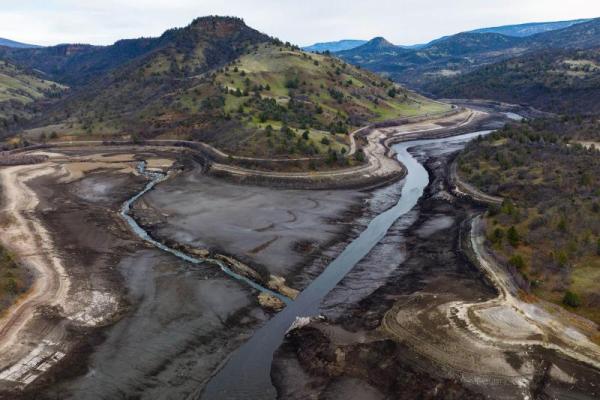
- On April 24, 2024, the student attorneys sent a letter with the Bureau of Land Management's (BLM) District office in Medford, Oregon, proposing a collaboration between the Wild Horse Fire Brigade and the BLM. Through the letter, the nonprofit proposes to work with BLM to help remove barbed wire from the Cascade-Siskiyou National Monument and secure a role for wild horses in removing dangerous built-up brush—the key fuel for wildfires in the area.
The Monument is home to endangered species like newly thriving wolf packs and the Northern spotted owl. The Obama Administration expanded the Monument in 2017 by over 42,000 acres; however, past cattle grazing activity has left behind an estimated ten thousand feet of rusty barbed wire strewn across the Monument.
Wild Horse Fire Brigade seeks to collaborate with the BLM on both removal of barbed wire and other debris and a wildfire grazing pilot program utilizing already-present wild horses living in the wilderness of southern Oregon and northern California. Wild horses have been shown to reduce wildfire risk by grazing on flammable brush and natural debris as well as dislocating dead branches by rubbing up against trees.
- Also on April 24, the team sent a letter to the Siskiyou County Board of Supervisors in Yreka, California, calling for the County's support in protecting wild horses' ability to access their open range habitat.
In the letter, the clinic emphasizes wild horses’ inherent relationship to California's landscape, and references California’s climate change laws and Siskiyou County's Grazing Policy to advocate for the wild horses' right to the open range in the wilderness in and around the Monument. Access to the "open range" is a common law doctrine often found in the western United States where cattle and horses are allowed to roam the land and graze unless landowners “fence out” the area. The letter requests that Siskiyou County recognize the practicality of the wild horses for wildfire management and formally acknowledge Wild Horse Fire Brigade’s right to manage its wild horses on the open range.
The clinic's advocacy for Wild Horse Fire Brigade this year builds on the clinic's successful lawsuit against the BLM, resolved in 2023, which halted roundups in the Pokegama Herd Management Area along the California-Oregon border.





